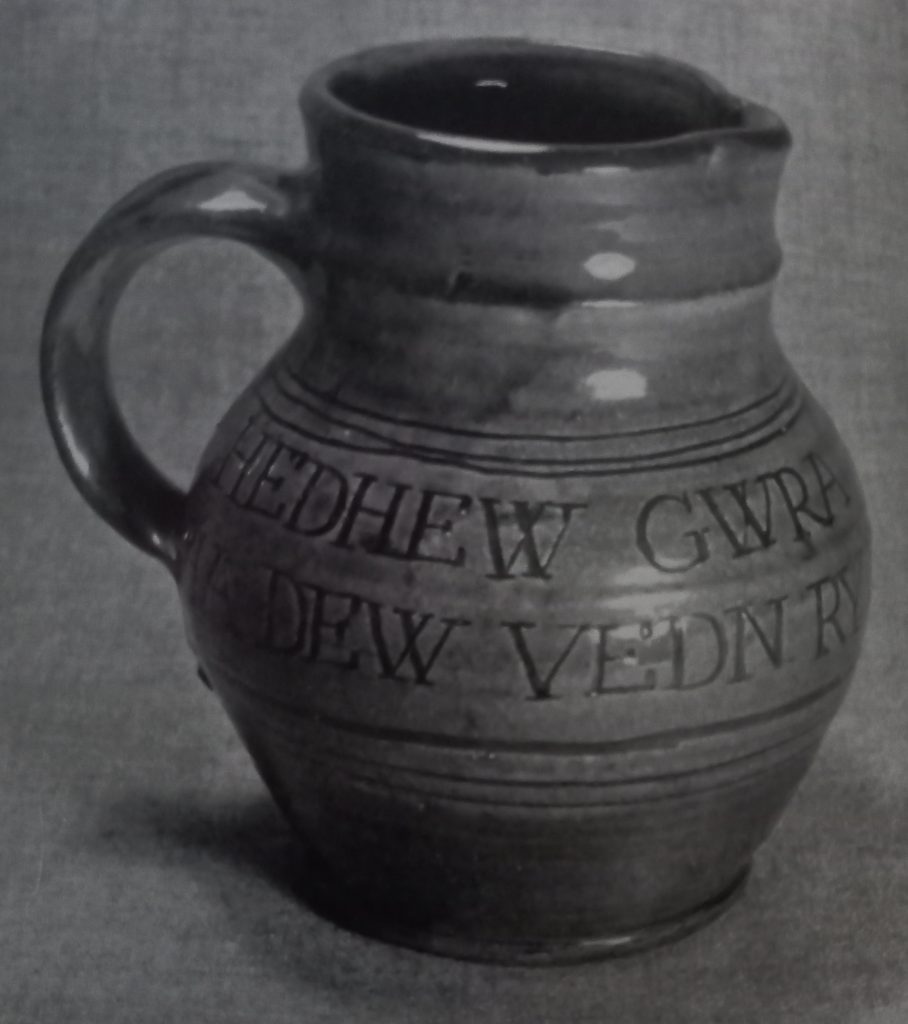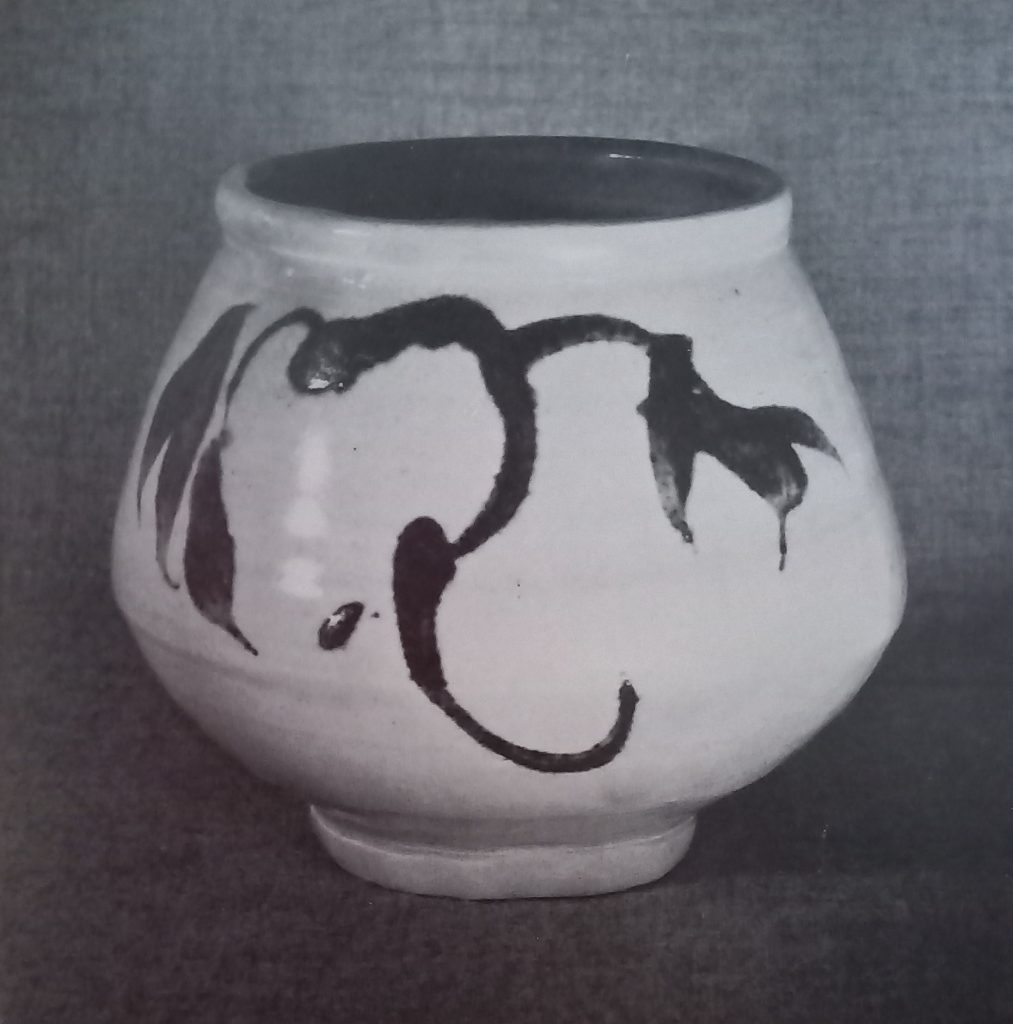For my birthday I was gifted Muriel Rose’s, Artist Potters in England. It was ex-libris from Helen Blair (1907–1997) the painter, but the real delight was you can see two pieces owned by Charlotte Bawden.

Charlotte Bawden (1902-1970)
Painter, potter and teacher. She was born Charlotte Epton and met her future husband, the artist Edward Bawden, at Royal College of Art, marrying him in 1932. After the RCA she went into education, teaching art at the Cheltenham Ladies College. Being so close to Winchcombe, she met the potter Michael Cardew in 1928. As a customer of the pottery Charlotte became inspired enough the following year to work at the St Ives Pottery under Bernard Leach, becoming his secretary and his pupil. She had success at the pottery and exhibited in craft shows until 1931 when a fire at the pottery destroyed some of her work. It was around this time she became engaged to Bawden. She moved to London and worked for Muriel Rose at her shop The Little Gallery. After this she married Edward and they lived in Great Bardfield together. Bawden’s father was able to acquire Brick House in 1932 for five hundred pounds, as a wedding present for Edward and Charlotte.

In 1932 Charlotte Epton married Edward Bawden and moved to their newly acquired home, Brick House in Great Bardfield, where they had been lodging together with Eric Ravilious and his wife Tirzah Garwood. Edward and Charlotte have two children, Richard and Joanna Bawden.
After her marriage, Charlotte helped found Denman College, the Women’s Institute establishment, where there is now a room named after her. In the 1950s Charlotte started to throw pots again, working with Joanna Constantinidis (who had just started teaching pottery at Cheltenham Girls College). The Victoria & Albert Museum hold Charlotte’s work.
Muriel Rose’s biography includes opening The Little Gallery, working for the craft council with Bernard Leach and being an author.
The other loan below, was by Gwyn Lloyd Thomas, Charlotte’s friend from Cheltenham College and the WI.

Mary Gwyneth Lloyd Thomas (1899-1978)
A curious orbiter of the world of Great Bardfield was Gwyneth Lloyd Thomas. Born at Liscard, Cheshire, she was the daughter of a vicar and a headmistress (Alice Evans). Gwyneth attended Nottingham High School and then the King Edward VI High School in Birmingham. After this she read English at Somerville College, Oxford. She then taught at Birkenhead and then at the Cheltenham Ladies College from 1924-28, this is where she met Charlotte Epton, a Royal College of Art student from Lincolnshire. Charlotte was to become a great friend of Gwyneth and they stayed in touch. Charlotte was also training at Winchcombe Pottery under Michael Cardew and this this is how the Cheltenham college acquired some Winchcombe pieces. When Charlotte went to work for Bernard Leach at St Ives pottery, Gwyneth went to visit and bought a pot by Shoji Hamada made in 1930. It was featured in Muriel Rose’s Artist Potters in England. Charlotte would marry the artist Edward Bawden and this would bring Gwyneth into contact with many artists. At the end of 1928 Gwyneth became a lecturer in English at Girton College, Cambridge, a role she kept until 1952 when she was made a Life-Fellow of Girton. Being closer to Great Bardfield while at Cambridge would mean Gwyneth would be a guest of both the Bawden’s and of John and Lucie Aldridge. In the Garwood memoir, Tirzah recalls Gwyneth having an affair with a married doctor called Joe, who was married and believed in free love. In 1933 Gwyneth helped name Edward Bawden’s paintings for an exhibition at the Zwemmer Gallery, the works were named with lines of poems such as: “I often blotted what I had begunne; this was not quick enough, and that was dead. Nothing could seem to rich to clothe the sunne”, or “If I a fancy take, to black and blue, that fancy doth it beauty make.” In 1938 when J M Richards and Eric Ravilious were stuck for a name for their book, it was Gwyneth who suggested High Street. During the Second World War she worked in the Nursing Auxiliary Reserve unit. In 1946 Gwyneth would also work with Bawden when he illustrated a selection of poems she chose and edited in Travellers’ Verse.
After her work at Girton she became headmistress of Channing School, Highgate, 1952-64. She published works on John Dryden, Andrew Marvell and Gerard Manley Hopkins under M. G. Lloyd Thomas. She died in 1978.